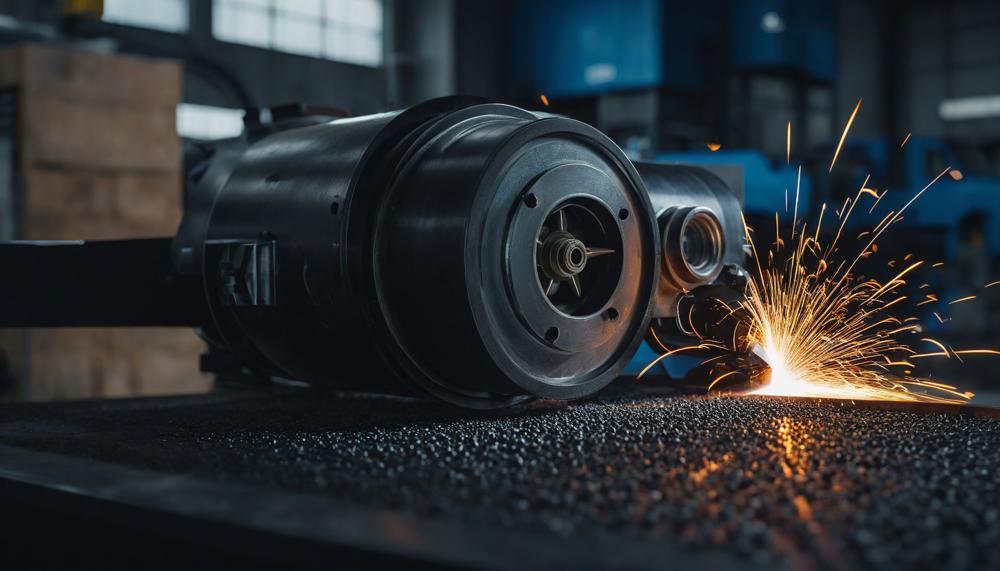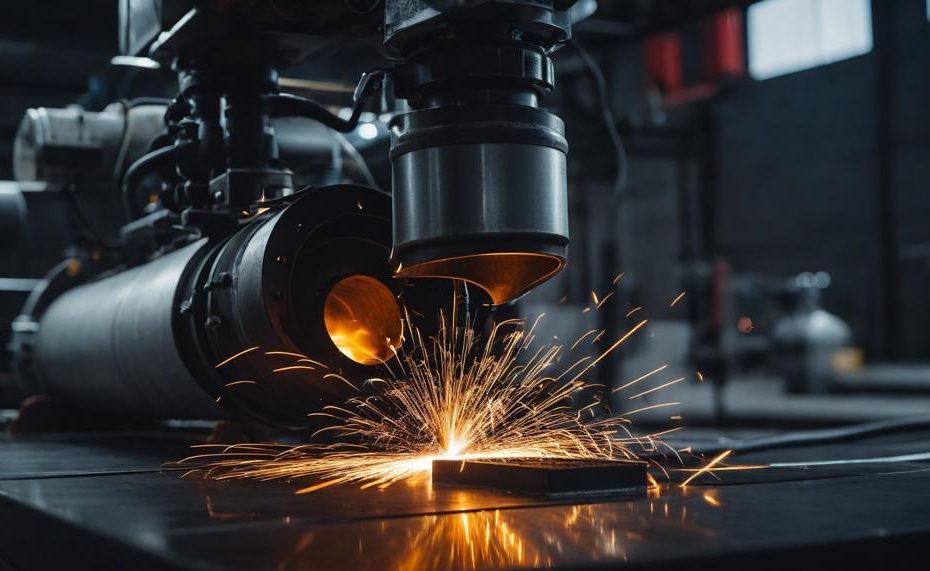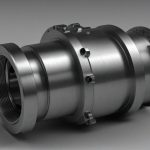If you’ve ever dabbled in welding or are considering taking it up, you’ll quickly discover that the cost of welding gas is an integral part of the craft. Understanding these costs isn’t just about budgeting; it’s about making informed choices that enhance your welding experience.
But what factors into the cost of welding gas? It’s not just about the type of gas; it’s a blend of various elements that dictate the price. Here’s a glimpse into what we’ll explore:
- Type of Gas: Discover how the choice between Argon, Helium, and CO2 affects your wallet.
- Purity Levels: Learn why the purity of gas can sway the cost significantly.
- Supply and Demand: Uncover the economic principles that influence gas prices.
- Cylinder Sizes and Rentals: Understand how the size of your gas cylinder and rental fees play into the overall cost.
- Location Variations: Get insights into why welding gas prices vary from place to place.
Whether you’re a hobbyist or a professional, this blog post will guide you through the nuances of welding gas costs, helping you make savvy decisions that keep your flame burning bright without burning a hole in your pocket. Let’s dive into the details.
Contents
Types of Welding Gases and Their Costs
Welding gas is crucial for ensuring top-notch welds, keeping oxidation at bay and guaranteeing consistent quality. Let’s dive into the most common types of welding gases and see how their costs stack up:
Oxygen (O2)
- Usage: Widely used in welding and cutting, especially in oxy-fuel processes.
- Cost: $0.25 to $0.35 per cubic foot.
Acetylene (C2H2)
- Usage: Favoured for its high-temperature flame, perfect for cutting and welding.
- Cost: $0.40 to $0.50 per cubic foot.
Argon (Ar)
- Usage: Ideal for TIG welding, providing a non-reactive shield.
- Cost: $0.30 to $0.40 per cubic foot.
Carbon Dioxide (CO2)
- Usage: A budget-friendly option for MIG welding, often mixed with other gases.
- Cost: $0.10 to $0.20 per cubic foot.
Helium (He)
- Usage: Enhances arc stability in TIG welding, but pricey.
- Cost: $3 to $7 per cubic foot.
Cost Comparison:
Here’s a handy table to compare the costs of these common welding gases:
| Gas Type | Cost per Cubic Foot |
| Oxygen (O2) | $0.25 – $0.35 |
| Acetylene (C2H2) | $0.40 – $0.50 |
| Argon (Ar) | $0.30 – $0.40 |
| Carbon Dioxide (CO2) | $0.10 – $0.20 |
| Helium (He) | $3 – $7 |
Argon
Argon, esteemed for its inert properties, serves as a linchpin in both TIG and MIG welding, ensuring the integrity and quality of the weld. Its cost, when juxtaposed with other welding gases like carbon dioxide and helium, reflects a balanced amalgamation of efficiency and economic viability. Let’s break down the cost comparison in a straightforward manner:
| Gas Type | Cost per Cubic Foot | Common Use |
| Argon | $0.30 to $0.50 | TIG/MIG welding |
| Carbon Dioxide | $0.10 to $0.30 | MIG welding |
| Helium | $1 to $2 | Welding aluminium and non-ferrous metals |
In the realm of welding, selecting the right gas pivots not just on cost but on the nuanced requirements of the project at hand. While argon’s price sits comfortably in the mid-range, its value is augmented by its versatility and the pristine quality it imparts to welds.
Carbon dioxide, though lighter on the pocket, is often used in concert with argon to optimize cost and weld quality. Helium, despite its heftier price tag, is indispensable for specific tasks requiring deeper penetration and cleaner welds, particularly with non-ferrous metals.
The sage advice for welders is to weigh the nuances of each gas against their project’s demands, leaning into argon’s balance of cost and quality for a broad spectrum of welding endeavors.
CO2
When it comes to welding, the choice of gas plays a pivotal role in ensuring the integrity and quality of the weld. Among the various options, CO2 stands out for its affordability and efficiency in specific welding applications. To shed more light on how CO2 welding gas stacks up against other types, let’s delve into a comparative analysis based on cost.
Cost Comparison of Welding Gases
| Gas Type | Average Cost for a 20-pound Cylinder (£) | Common Uses |
| Carbon Dioxide (CO2) | 15-25 | MIG welding for mild steel |
| Argon | 30-40 | TIG and MIG welding for non-ferrous metals |
| Helium | 50-60 | Welding materials with high heat conductivity like aluminum and copper |
| Argon/CO2 Mix | 25-35 | MIG welding with improved arc stability and reduced spatter |
Insights into Costs and Uses
From the table above, we observe that CO2 is indeed among the most economical choices for welding gas, particularly when dealing with mild steel. It’s not just about being light on the wallet; CO2 provides deep penetration which is crucial for thick materials. However, it’s worth noting that pure CO2 can lead to increased spatter compared to mixes or inert gases like argon.
Argon, while pricier, is known for its versatility and superior results, especially on non-ferrous metals. Its higher cost is justified by the cleaner welds and broader applicability across different materials and welding techniques.
Helium, on the other end, is the most expensive due to its scarcity and high demand in other industrial applications beyond welding. Its high cost is offset by its unique properties that enable welding of materials like aluminum and copper effectively.
For those looking for a middle ground, argon/CO2 mixes offer a balanced solution. They provide better arc stability than pure CO2 and less spatter, making them a preferred choice for many welders who seek quality without excessively spending.
Location-Based Cost Variations
Location-based cost variations significantly influence the price of welding gas, making it vital for welders to understand how these fluctuations might affect their expenses. This understanding allows for strategic planning, ensuring quality doesn’t get compromised by unforeseen costs.
The Impact of Location on Welding Gas Prices
Welding gas prices are not uniform across the board; they’re swayed by several localised factors. The crux of the matter lies in the logistics of supply and demand, storage, and transportation costs, alongside regional economic conditions.
Key Factors Affecting Welding Gas Prices by Location
- Transportation and Storage Costs: The further a supplier is from the source of the gas, the higher the transportation costs. Additionally, storage expenses can vary depending on local facility costs.
- Supply and Demand Dynamics: In areas with higher demand for welding gas, prices may be elevated due to the classic economic principle of supply and demand.
- Local Economic Conditions: Taxes, labour costs, and real estate values can all impact the cost of welding gas in a given area.
Strategies to Mitigate Location-Based Cost Variations
| Action | Benefit | Consideration |
| Shop Around | Finds competitive prices | Time-consuming but can lead to significant savings |
| Buy in Bulk | Reduces unit price | Requires storage space |
| Rent Tanks | Saves on purchase cost | Potential long-term costs |
Quality vs. Cost
While cost-saving measures are important, prioritising high-quality welding gas is paramount. Opting for cheaper alternatives can result in subpar welds, leading to potential rework and additional costs down the line.
Quantity-Based Cost Variations
Understanding the dynamics of Quantity-Based Cost Variations in welding projects unfolds a clear picture: the more welding gas you need, the higher the expense tethered to your project. Let’s dive deeper into how this plays out.
Cost Impact of Welding Gas Consumption
Welding gas, an essential for shielding the weld area from atmospheric gases, dictates not just the quality but also the cost of your welding project. The quantity of gas required hinges on several elements – from the type of welding process employed to the thickness and type of material being welded.
Key Factors Influencing Gas Consumption
- Welding Technique: Techniques like TIG or MIG welding have different gas requirements.
- Material Type: Metals such as aluminium or stainless steel might need more gas for a clean weld.
- Project Complexity: Larger or more complex projects consume more gas due to longer welding times.
Calculating the Cost: A Practical Example
Here’s a simplified table showcasing hypothetical cost variations based on gas quantity:
| Gas Volume (cubic feet) | Cost per cubic foot (£) | Total Cost (£) |
| 100 | 0.50 | 50 |
| 200 | 0.45 | 90 |
| 300 | 0.40 | 120 |
Observations and Strategies
- Bulk purchasing can reduce the cost per unit of gas, albeit increasing the initial outlay.
- Opting for efficient welding techniques and equipment can decrease gas consumption, hence cost.
Why Quality Welding Gas Matters
Selecting top-tier welding gas for your projects isn’t just a good idea; it’s a must if you’re aiming for results that don’t just pass the eye test but stand the test of time.
The Heart of the Matter: Shielding Your Work from Harm
Welding gas does more than just hang around; it actively guards your weld zone from atmospheric nasties like oxygen, nitrogen, and water vapour, which love nothing more than spoiling your hard work.

This shield ensures that your weld is not just strong, but also clean and aesthetically pleasing.
A Closer Look: The Right Gas Makes All the Difference
Different metals and projects require different gases or gas mixtures to bring out the best in your weld. Here’s a quick rundown to show you just how tailored these needs can be:
| Material | Recommended Gas | Why It Matters |
| Mild Steel | Argon/CO2 Mix | Optimises arc stability and reduces spatter. |
| Aluminium | Argon | Provides a clean, controlled environment for welding. |
| Stainless Steel | Argon/Helium Mix | Enhances heat input and weld quality. |
Beyond the Arc: Stability, Spatter, and Speed
Quality gas contributes significantly to arc stability, making your welding process smoother and your results more reliable.
Poor-quality gas can lead to excessive spatter, wasting material and increasing cleanup time, directly affecting your project’s speed and efficiency.
Tips for Finding the Best Prices on Welding Gas
Finding the best prices on welding gas requires a blend of savvy shopping, strategic purchasing, and keen negotiation. Here’s how to ensure you’re getting the most bang for your buck:
| Strategy | Description | Benefits |
|---|---|---|
| Shop Around | Compare prices from various suppliers, both local and online. | Potentially find lower prices or better deals than sticking with one supplier. |
| Bulk Purchases | Consider buying larger quantities of gas to avail bulk discounts. | Reduces the cost per cubic foot and saves money over time. |
| Rent or Lease Tanks | Instead of buying tanks outright, look into renting or leasing options. | Saves upfront costs and might include refill or exchange services. |
| Look for Promotions | Keep an eye out for sales, promotions, or loyalty programs offered by suppliers. | Take advantage of special offers to reduce costs. |
| Negotiate Prices | Talk to suppliers about better rates based on regular business or large orders. | Potential for personalized discounts, benefiting long-term relationships. |
Welding gas, crucial for protecting welds from oxidation and ensuring quality, can be a significant expense. The cost varies depending on factors like location, quantity, and type of gas. Most commonly used gases include Argon, Carbon Dioxide, and Helium, with prices ranging significantly. Knowing how to secure the best price is essential for budgeting and ensuring project success without compromising on weld quality.
Conclusion
When you start to weld, which is where art meets science through fusion, you quickly run into a key issue: the price of welding gas. This important resource, which is like the blood that keeps welding projects going, changes a lot depending on a number of important things. Whether it’s Argon, Carbon Dioxide, or Helium, as well as things like purity levels and tank sizes, each of these factors has its own effect on the total cost. Location and changes in the market can also make things more complicated by bringing a range of price differences that can affect the spending and planning stages of your project.
To get around these factors, you need to be aware and also think strategically. For some jobs, CO2 might be the most cost-effective option. On the other hand, Helium could make work on non-ferrous metals so much better that it’s unmatched. It’s not just about cost per cubic foot; it’s also about how well it fits the wants and goals of your project.
Answering the question “how much does welding gas cost?” gives you more information than just numbers. It also shows you ways to cut costs without lowering quality. You can always be on the lookout for ways to save money, like buying in bulk and negotiating prices, or you can use your usage habits to help you decide whether to rent or buy tanks.
Welders have to find a fine balance between cost-effectiveness and quality. As they do this, they’re not only keeping their lights lit, but they’re also learning more about how each choice affects the end of their work. In this complicated dance of flames and money, making the right choice can help you keep the flame of your project alive while keeping money-saving at the center of your efforts.





